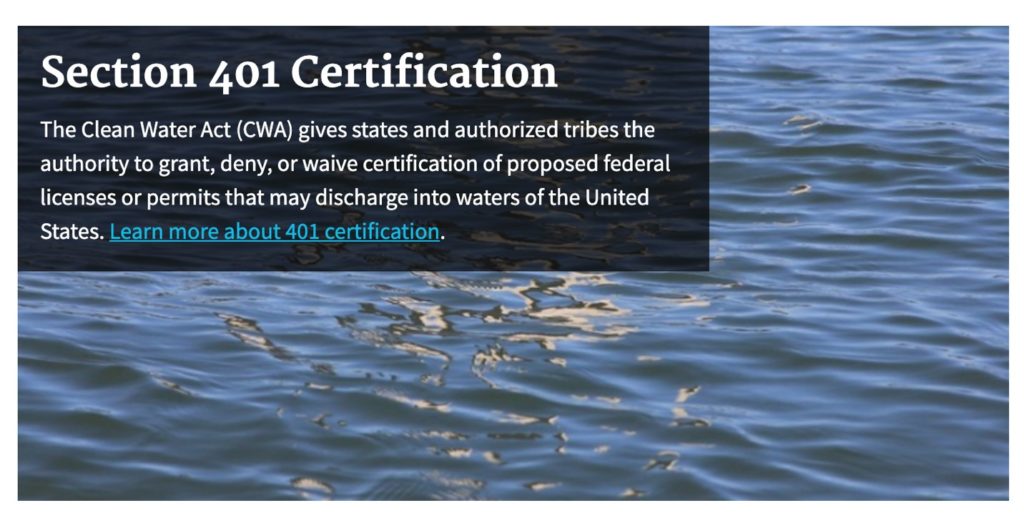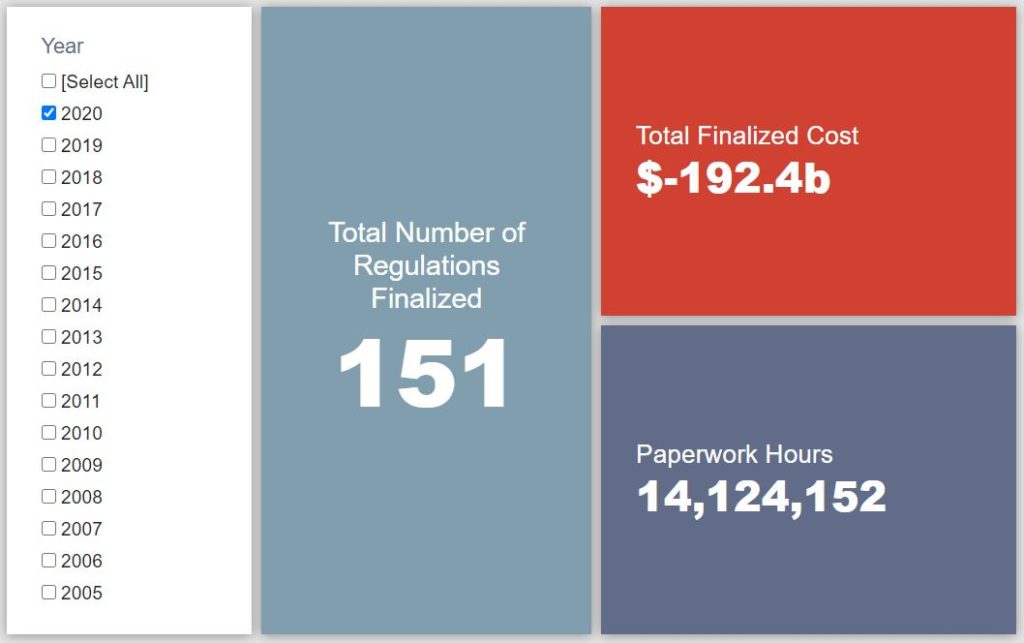Week in Regulation
June 8, 2020
Savings Continue to Accumulate
The streak continues. For the third consecutive week, net regulatory costs decreased. There were 16 rulemakings with some quantified costs or savings estimate, but – similar to last week – a single rule provided the bulk of the cost reductions. Across all rulemakings, agencies published $2.1 billion in total net cost savings but added 1.4 million hours of annual paperwork.
REGULATORY TOPLINES
- Proposed Rules: 52
- Final Rules: 69
- 2020 Total Pages: 34,909
- 2020 Final Rule Costs: -$192.4 billion
- 2020 Proposed Rule Costs: $8.3 billion
TRACKING THE REGULATORY BUDGET
The one action that significantly moved the needle on the fiscal year (FY) 2020 regulatory budget was a new “Hours of Service” rule from the Department of Transportation (DOT). Spurred in large part by stakeholder petitions, the rule makes a series of revisions to regulations surrounding how long and how far drivers can drive in a single stretch. DOT estimates that the increased flexibility from these changes could yield roughly $3.1 billion in total net savings (for the purposes of the regulatory budget under Executive Order 13,771).
The Trump Administration expected to reach $51.6 billion in cumulative net savings in FY 2020. To date in the fiscal year, agencies have officially published 91 deregulatory actions and 31 regulatory actions, totaling $195.6 billion in quantified total net cost savings.
THIS WEEK’S REGULATORY PICTURE
This week, the Environmental Protection Agency (EPA) makes the first substantive changes to regulations implementing a key part of the Clean Water Act (CWA) in nearly 50 years.
On June 1, the EPA announced that it had finalized its “Clean Water Act Section 401 Certification” rule. Section 401 of the CWA allows states to review infrastructure permitting decisions from federal agencies and certify that pollutant discharges comply with applicable water quality standards. The previous version of the rule was finalized in 1971, and despite substantive statutory changes to the CWA taking place in 1972, the regulatory code has never been fully consistent with those amendments.
Prompted by Executive Order (EO) 13,868, EPA initiated a rulemaking in 2019 to update the rule while meeting the objectives of the EO. The most salient objectives were to increase efficiency in the permitting process, ensure timely decisions, and to increase regulatory certainty when it comes to development of new energy infrastructure.
The rule clarifies that states have a maximum of one year to issue their certifications, though that time limit will often be shorter depending on the project. This is in line with the statutory language. It also limits the scope of states’ review to only those issues affecting water quality – a reviewing state cannot hold up its certification review in order to consider non-water quality issues. If EPA finds that a state is holding up its review for another reason, it will waive the certification requirement and allow the project to go through.
The rule will count as a deregulatory action under EO 13,771 since it is qualitatively deregulatory. EPA, however, was unable to estimate any quantitative savings from the rule. The rule was just one administration action targeted at expediting infrastructure permits this week – on June 4, President Trump signed an EO urging agencies to use “emergency authority” to speed up permitting.
TOTAL BURDENS
Since January 1, the federal government has published $184 billion in total net cost savings (with $192.4 billion from finalized rules) and 31 million hours of net annual paperwork burden increases (with 14.1 million hours due to final rules). Click here for the latest Reg Rodeo findings.













